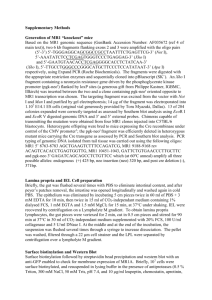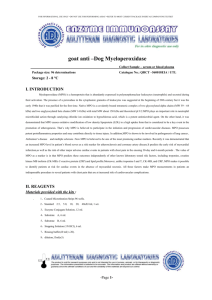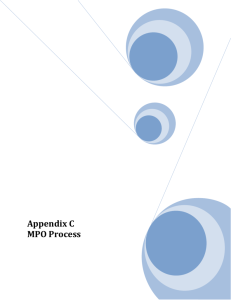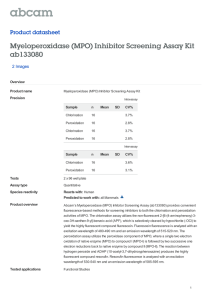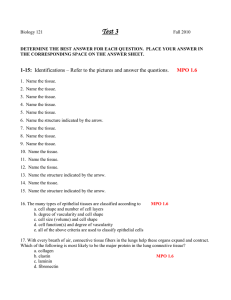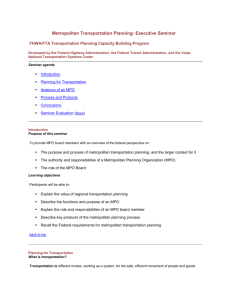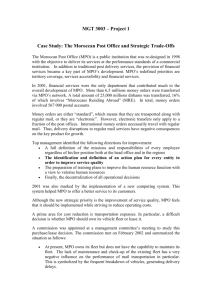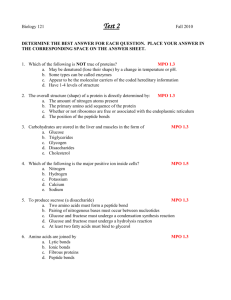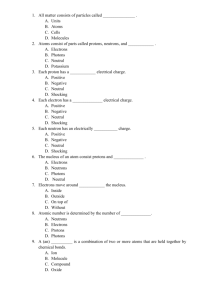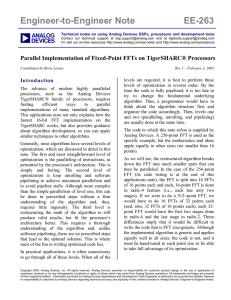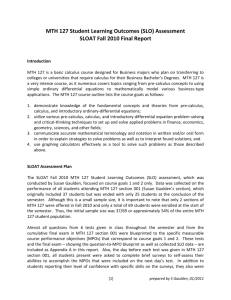bio_121_test1_blueprint_results
advertisement
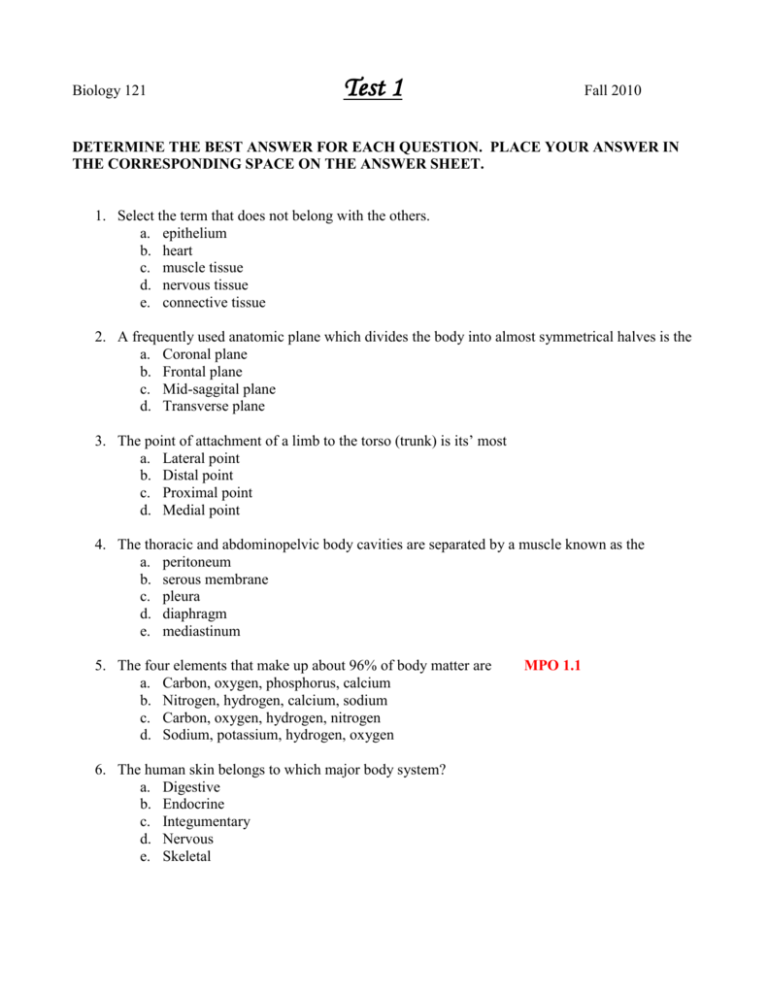
Biology 121 Test 1 Fall 2010 DETERMINE THE BEST ANSWER FOR EACH QUESTION. PLACE YOUR ANSWER IN THE CORRESPONDING SPACE ON THE ANSWER SHEET. 1. Select the term that does not belong with the others. a. epithelium b. heart c. muscle tissue d. nervous tissue e. connective tissue 2. A frequently used anatomic plane which divides the body into almost symmetrical halves is the a. Coronal plane b. Frontal plane c. Mid-saggital plane d. Transverse plane 3. The point of attachment of a limb to the torso (trunk) is its’ most a. Lateral point b. Distal point c. Proximal point d. Medial point 4. The thoracic and abdominopelvic body cavities are separated by a muscle known as the a. peritoneum b. serous membrane c. pleura d. diaphragm e. mediastinum 5. The four elements that make up about 96% of body matter are a. Carbon, oxygen, phosphorus, calcium b. Nitrogen, hydrogen, calcium, sodium c. Carbon, oxygen, hydrogen, nitrogen d. Sodium, potassium, hydrogen, oxygen 6. The human skin belongs to which major body system? a. Digestive b. Endocrine c. Integumentary d. Nervous e. Skeletal MPO 1.1 7. Which systems are characterized as protecting against disease as well as returning proteins and plasma to the cardiovascular system? a. Respiratory and digestive b. Urinary and reproductive c. Cardiovascular and endocrine d. Nervous and integumentary e. Lymphatic and immune 8. Which major body system supports and protects the body, assists in body movements, houses cells that give rise to blood cell, and stores minerals? a. Cardiovascular b. Endocrine c. Muscular d. Reproductive e. Skeletal 9. Which major body system regulates the volume and chemical composition of blood, eliminates wastes, regulates fluid and electrolyte balance, and helps regulate red blood cell count? a. Cardiovascular b. Digestive c. Muscular d. Reproductive e. Urinary 10. _____ is the ability to detect and react to changes in the external or internal environment. a. Cellular respiration b. Differentiation c. Growth d. Movement e. Responsiveness 11. The majority of the liver is found in the a. right upper quadrant b. right lower quadrant c. left upper quadrant d. left lower quadrant 12. Which of the following organs is NOT in the mediastinum? a. Heart b. Esophagus c. Trachea d. Lungs 13. Which of the following is NOT in the abdominal cavity? a. Spleen b. Pancreas c. Gallbladder d. Urinary bladder e. 14. What direction is the heart from the lungs? a. Lateral b. Medial c. Posterior d. Proximal e. Superficial 15. Which direction are the ears from the tip of the nose? a. Medial and posterior b. Lateral and anterior c. Medial and anterior d. Lateral and posterior e. Superior and medial 16. What direction is your right shoulder from your navel? a. Inferior and medial b. Inferior and lateral c. Superior and medial d. Superior and lateral 17. A feedback system consists of three essential components: a control center, a receptor and a(n) a. Effector b. Integrator MPO 3.1 c. Monitor d. Regulator 18. Osmometer cells sense changes in the concentration of blood plasma; therefore they must be a. Receptors b. Control centers MPO 3.1 c. Part of the cardiovascular system d. Effectors 19. When the bonds of ATP are broken, energy is released to do work. This is an example of a. Radiant energy b. Electrical energy MPO 1.2 c. Mechanical energy d. Chemical energy 20. Homeostasis is the condition in which the body maintains a. All systems at precise, preset states b. A relatively stable internal environment, within limits c. An “unchanging” state d. A dynamic state within an unlimited range MPO 3.1 21. The speed or rate of a chemical reaction is influenced by all of the following except: a. The concentration of the reactants b. The temperature MPO 1.2 c. The presence of catalysts or enzymes d. The presence or absence of carbon 22. Select the term that does not belong with the others. a. pH 7 b. pH 4 c. neutrality d. [OH-] = [H+] MPO 1.1 23. Which of the following levels of organization is most complex? a. Chemical b. Organ c. Tissue d. Organ System e. Cellular 24. Which of the following levels of organization is least complex? a. Chemical b. Organ c. Tissue d. Organ System e. Cellular 25. An anatomical term that pertains to the outer wall of a body cavity is a. Proximal b. Superficial c. Parietal d. Visceral e. Distal 26. The pleura is a serous membrane associated with the a. Brain b. Heart c. Lungs d. Abdominal viscera e. Spinal cord 27. Salts are always a. Ionic compounds b. Single covalent compounds c. Double covalent compounds d. Hydrogen bonded MPO 1.1, 1.2 28. The numbers listed represent the first, second, and third energy levels, respectively. On this basis, which of the following is an unstable or reactive atom? MPO 1.1, 1.2 a. 2,8,8 b. 2,8 c. 2 d. 2,8,1 (29-31). Match the following definitions with the correct type of bond. MPO 1.2 29. A bond in which electrons are shared unequally. 30. A bond in which electrons are completely lost or gained by the atoms involved. 31. A type of bond important in tying different parts of the same molecule together into a 3dimensional structure. a. ionic bond b. polar covalent bond c. non-polar covalent bond d. hydrogen bond (32-38). Match the following definitions with the correct terms. MPO 1.1 32. Electrically charged particle resulting from the loss of an electron. 33. Neutral subatomic particle. 34. Smallest particle of an element which retains its properties. 35. Subatomic particle which makes the atoms of one element different from those of another. 36. Anything that takes up space and has mass (weight). 37. The ability to do work. 38. Subatomic particles that determine an atom’s chemical behavior or bonding ability. a. atom b. energy c. electron d. proton e. neutron f. matter g. anion h. cation 39. An atom of oxygen has 8 protons, 8 neutrons, and 8 electrons. What is its atomic number? a. 8, because it has 8 protons b. 8, because it has 8 neutrons MPO 1.1 c. 8, because it has 8 electrons d. 16, because it has 8 protons plus 8 electrons e. 16, because it has 8 protons plus 8 neutrons 40. An atom of oxygen has 8 protons, 8 electrons, and 8 neutrons. Which of the following is the mass number of oxygen? MPO 1.1 a. 8, because it has 8 protons b. 8, because it has 8 electrons c. 8, because it has 8 neutrons d. 16, because it has 8 protons plus 8 electrons e. 16, because it has 8 protons plus 8 neutrons (41-46). Name the organ system to which each of the following sets of organs belongs. 41. Blood vessels, heart 42. pancreas, pituitary, adrenal glands 43. kidneys, bladder, ureters 44. esophagus, large intestine, stomach 45. breastbone, vertebral column, skull 46. brain, nerves, sensory receptors (47-50). The person in the figure below is not in anatomical position. List four corrections that need to be made for this person to be in anatomical position. For each of the following sets of data, graph the provided data, and then determine whether the data show negative or positive feedback. 51. MPO 3.1 52. MPO 3.1 Biology 121 – Test 1 Data obtained September 23, 2010 N = 45 Question # 5 17 18 19 20 21 29 30 31 32 33 34 35 36 37 38 39 40 51 52 MPO 1.1 MPO 1.2 MPO 3.1 MPO 1.1 3.1 3.1 1.2 3.1 1.2 1.2 1.2 1.2 1.1 1.1 1.1 1.1 1.1 1.1 1.1 1.1 1.1 3.1 3.1 # Correct 43 37 32 33 33 27 18 31 29 23 32 33 21 42 41 27 26 21 13 12 Percentage 96 82 71 73 73 60 40 69 64 51 71 73 47 93 91 60 58 47 29 27 Average for same MPO 68.7 56.4 61.2
